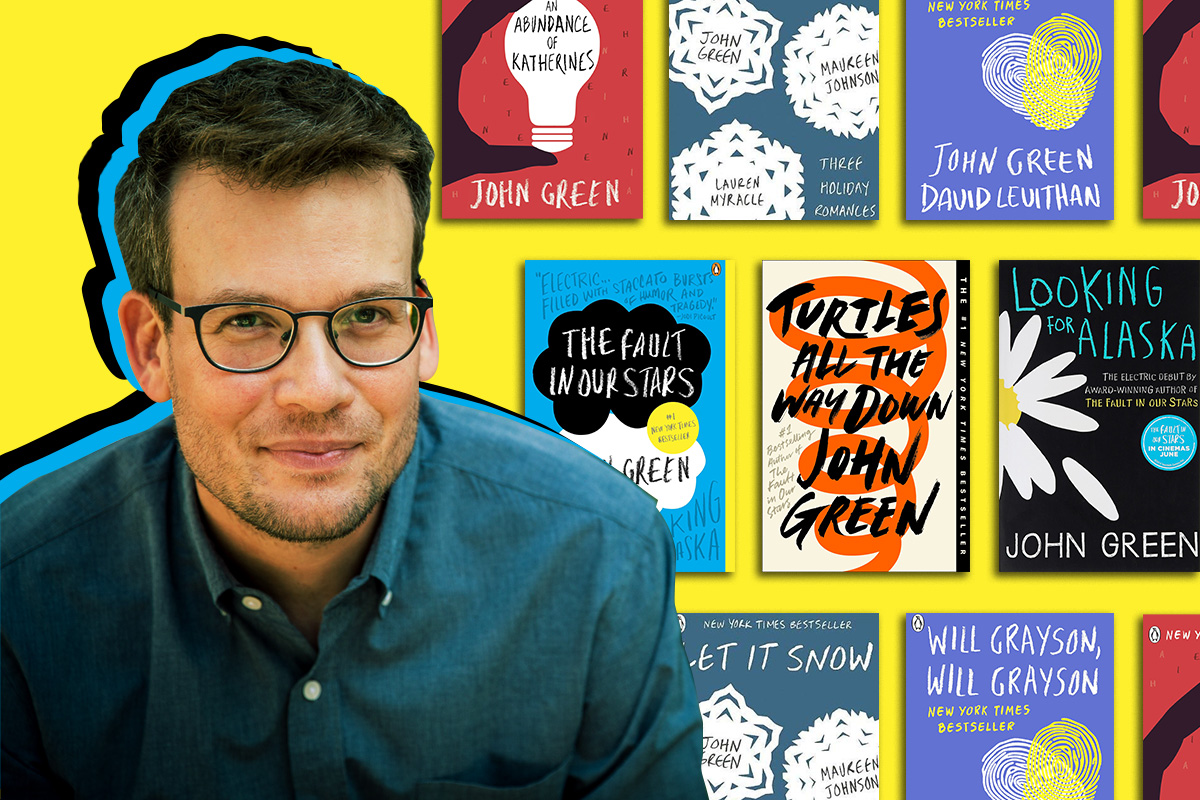
John Green books have a way of breaching your walls and changing you from within. Kunzum Gurgaon’s community manager, Sahil Sihag, explores the novels that most affected him and the threads that connect them.
Some books strengthen your spine when you’re a teenager. For me, such books usually came from the pen of John Green. After finishing one of these coming-of-age books, I would find myself thinking about my own life experiences and feeling inspired to grow out of my tragedies, like the protagonists of Green’s stories.
When you pick up a John Green novel, there is always something new to learn, because his realistic fiction has a philosophical bent to teen troubles. For instance, in An Abundance of Katherines (2006), Colin Singleton is a child prodigy with an IQ of over 200—Singleton makes predictions about the future using intricate equations and theories that he has developed, but he soon learns that, despite his genius, the world doesn’t revolve around him.
John Green doesn’t write uncomplicated characters; even the supporting cast is nuanced. He always considers them in relation to one another, take the interconnected stories of citizens of a town that comes to a standstill after a record-breaking snowfall in Let it Snow (2008) or the two strangers with the same name who cause an unexpected rift in each other’s life in Will Grayson, Will Grayson (2010). Through our relationships, we are bound to one another, and a lot of what makes us interesting occurs in relation to others.
Green’s stories do not always come to a definite conclusion. Since nothing is final in his typical reader’s exploratory age, Green expects that they will relate with the absurdity of these endings. For instance, if you’re reading his debut book, Looking for Alaska (2005), you might have concerns regarding the climax. Chapter headings suggest a countdown to some sort of event, and as the event approaches, we aren’t sure what will happen but know that whatever is about to happen will undoubtedly hurt. His first book has the emotional high-points for which Green would later become famous.
The author’s personal experiences also show up in some of his characters and plots. After graduating, Green worked as a student chaplain in a children’s hospital, and the experience of being around children suffering from terminal illnesses inspired him to pursue writing. That inspiration came to fruition in The Fault in Our Stars (2012), which became one of Green’s best-known works. The book made it clear from the very beginning that there would be no happy ending—but it still gave Hazel and Augustus plenty to celebrate In this popular YA book, Green tackled adult themes like loss, suffering, death, and a fear of oblivion with ample wit and philosophy.
One of the things YA books are doing now is asking big questions about suffering and its meaning. Green’s books are often placed on the same shelf as other books about mental illness in an effort to de-stigmatise the subject. His 2017 book, Turtles All The Way Down, is the result of his personal struggles with mental health. The protagonist of the book, Aza Holmes is a 16-year-old Indianapolis resident who battles severe anxiety and obsessive-compulsive disorder while attempting to unravel the mystery of a missing billionaire.
After a captivating run of fiction, Green pleasantly surprised us in 2021 with his first foray into nonfiction: a collection of essays and reviews titled The Anthropocene Reviewed. It detailed the significant effects that human activity has had on the environment. Green starts off by highlighting a distinctive aspect of our cultural moment, claiming that everyone has evolved into a reviewer, everything has become a subject of reviews, and that to live in this hyperconnected world also means there can be no escape from judgement.
Whatever he’s writing, fiction or nonfiction, John Green remains an advocate of hope. It’s the kind of hope that is difficult to cultivate, but once it settles in your chest, it becomes your armour against the biggest of storms.

1 thought on “An Abundance of Hope Amid Tragedy: How John Green’s Books Transcend the Young-Adult Bookshelf ”